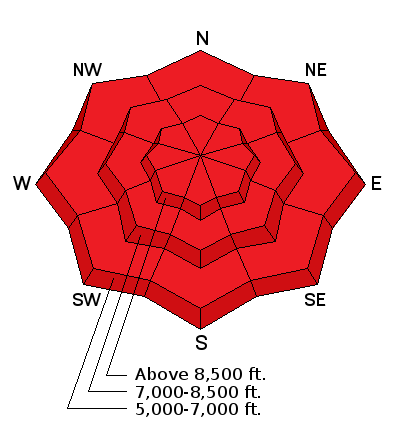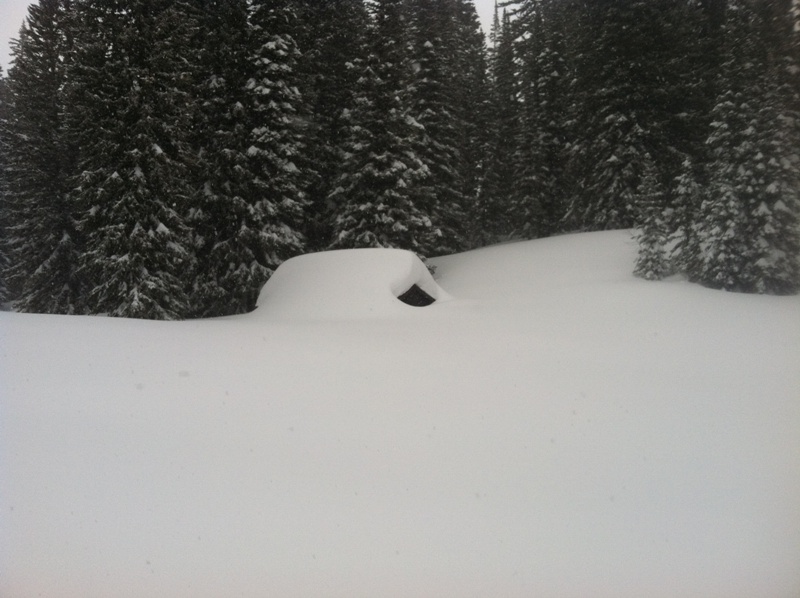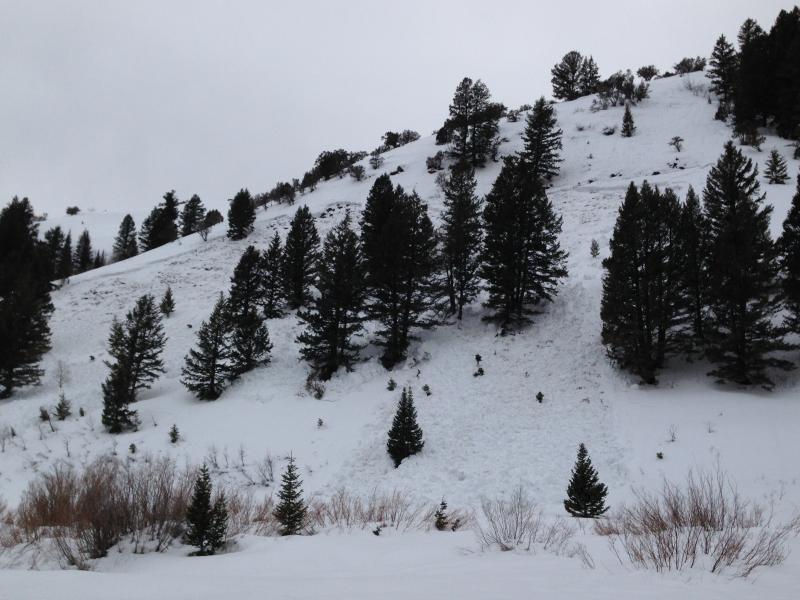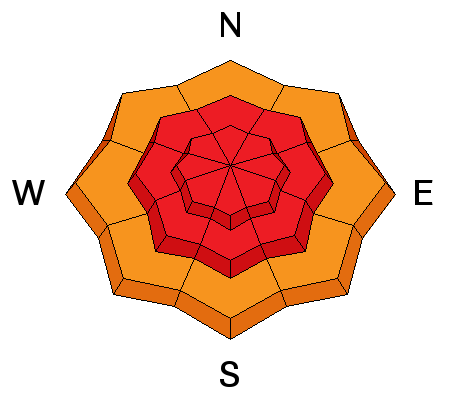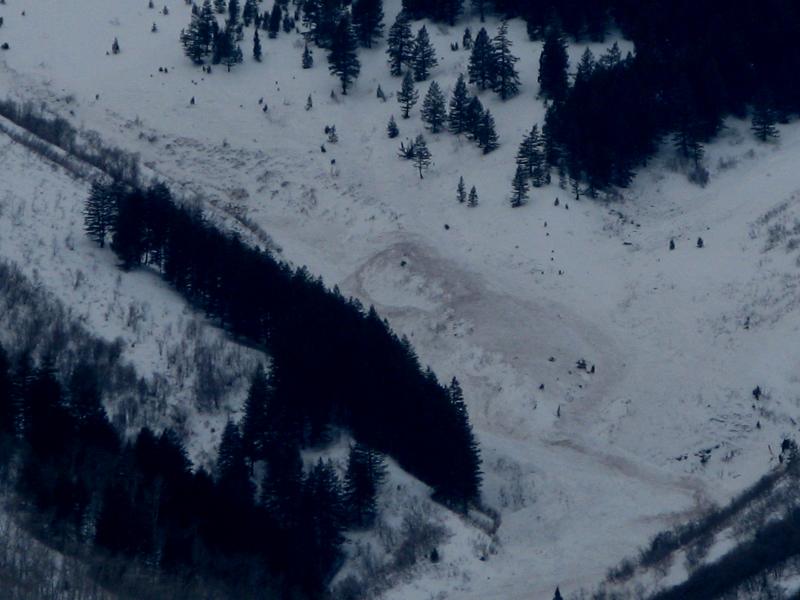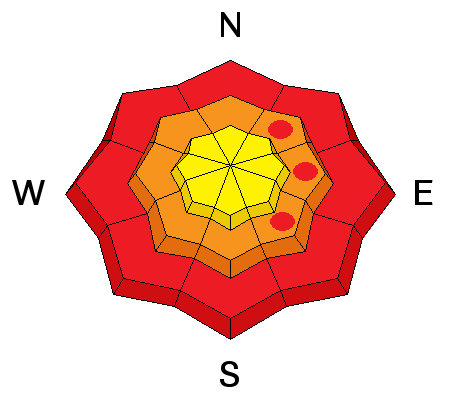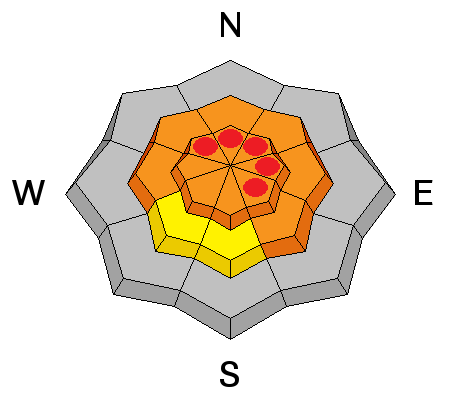Forecast for the Logan Area Mountains

Sunday morning, February 16, 2014
A HIGH or Level 4 avalanche danger exists on many slopes in the in the Logan Area backcountry. Dangerous avalanches are possible today at all elevations and on slopes facing every direction due to very mild temperatures, rain, heavy snow up high, sustained southwest winds, and widespread preexisting weak snow. Dangerous deep slab avalanches could be triggered remotely, from a distance, or the flats below steep slopes. Cooling today will begin to help dangerous wet slab conditions on saturated lower elevation slopes. Continue to stay off of and out from under steep slopes and obvious or historic avalanche paths.
